11 High-Yield Topics You Can Expect On The OB/GYN Exam
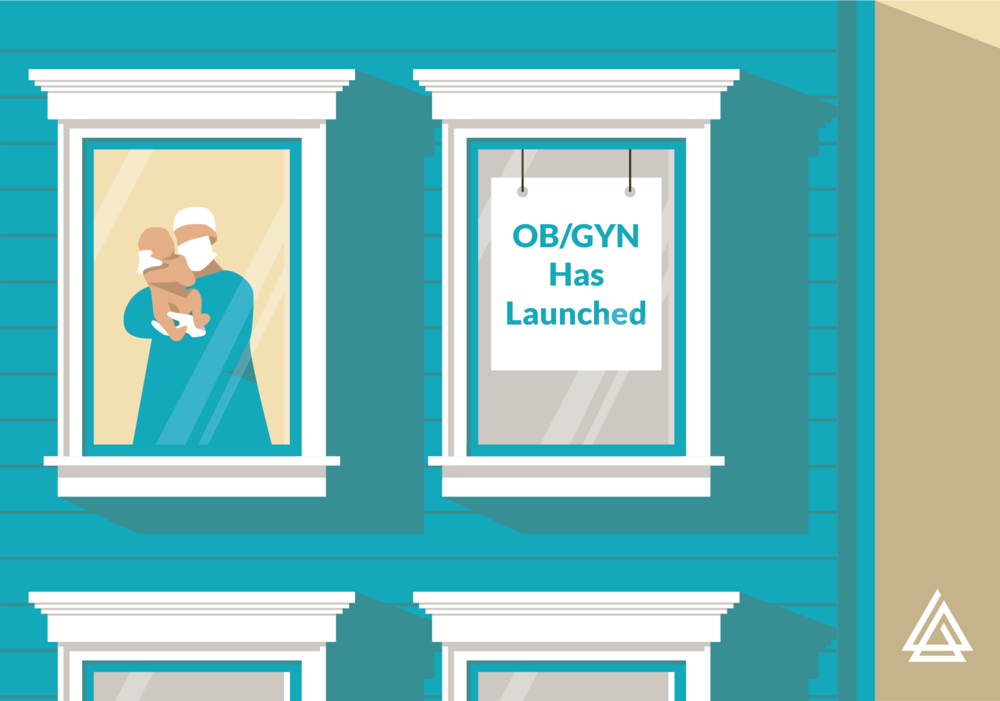
Scrub into the OR confidently with the new release of the AMBOSS OB/GYN Shelf. No matter which facet of medicine you are interested in, OB/GYN is a fascinating rotation that will afford you a wide breadth of opportunities. Flex your differential diagnosis muscles on everything from STIs to the miracles of life with our extensive OB/GYN Qbank, which contains over 300 case-based questions written by a team of 50+ physicians. Questions focus on all relevant NBME topics, including postpartum hemorrhage, ovarian tumors, pre-eclampsia and much more.
Our growing Qbank includes over 1950 questions covering all clinical knowledge areas, with full packages available for Surgery, Neurology, Pediatrics, Medicine, Psychiatry, and now, OB/GYN. Since the NBME requires a strong knowledge base that is fairly evenly split down the middle of obstetric and gynecologic issues, you should expect to see lots of crossover between the two fields. The AMBOSS OB/GYN Qbank covers everything you need to know, including the most important clinical features and management steps. The AMBOSS OB/GYN Shelf content encompasses all relevant topics that you will be tested for on the exam according to the USMLE outline, with a focus on high-yield material.
Want a sneak peek of the high-yield OB/GYN content you’ll need to know for the exam? Check out these suggestions from Board Vitals (and one or two of our own!):
Abnormal Bleeding
From post-menopausal women experiencing endometrial malignancy to third trimester pregnancies, where placental pathologies are prioritized, our questions focus on the risk stratification of patients based on their age, clinical history and diagnostic findings.
 The image shows an H&E stain of endometrial tissue that has been obtained from a fractional curettage.
The image shows an H&E stain of endometrial tissue that has been obtained from a fractional curettage.
Amenorrhea
This is a very important NBME topic focuses on various endocrine and environmental etiologies of primary and secondary amenorrhea and includes diagnostic considerations for each etiology, as well as optimal management strategies and much more.
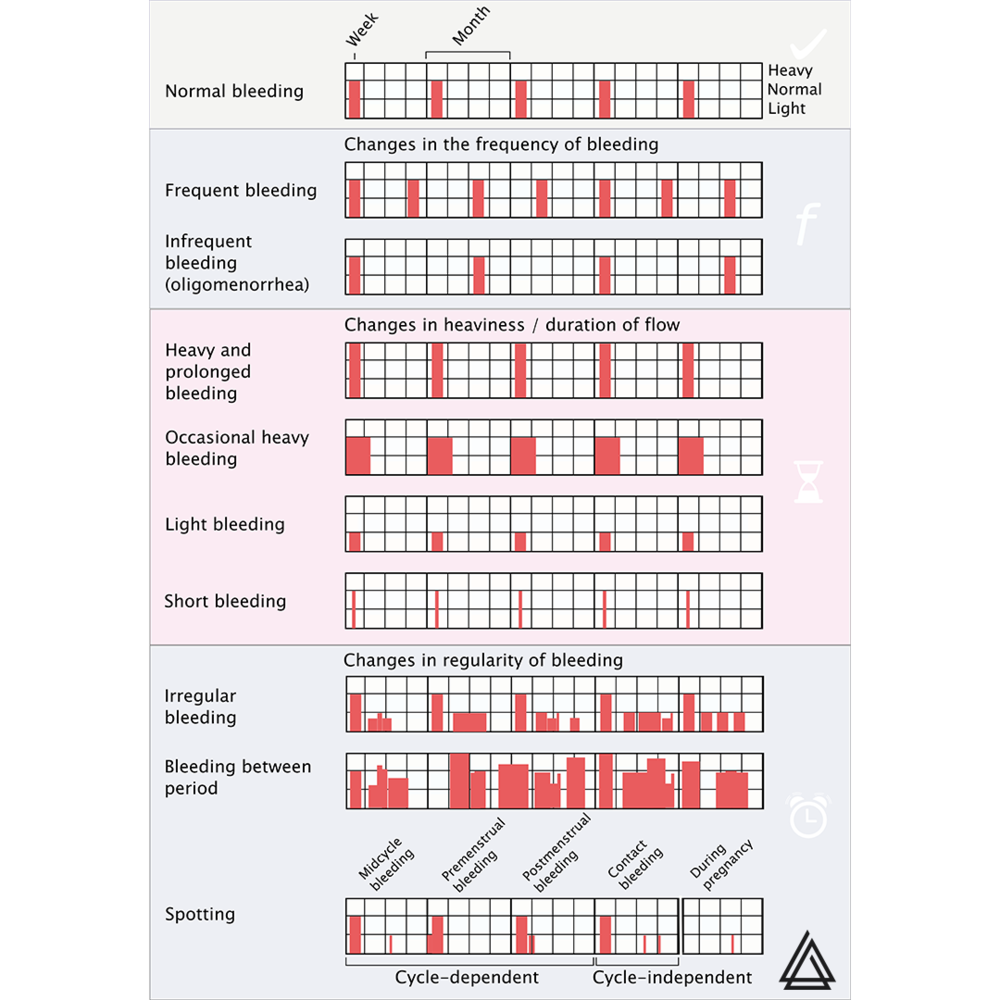 This chart provides an aid for classifying the main types of menstrual irregularities based on frequency, duration and flow of menses.
This chart provides an aid for classifying the main types of menstrual irregularities based on frequency, duration and flow of menses.
Breast Cancer
Our extensive image bank includes mammographies and ultrasounds. Within our clinical knowledge library, you will find guidelines for breast cancer screening, information on the clinical assessment of suspected breast cancer, common predisposing factors, treatment options, and much more. Review our Qbank to learn more on neoplastic and non-neoplastic causes for breast pain and nipple discharge.
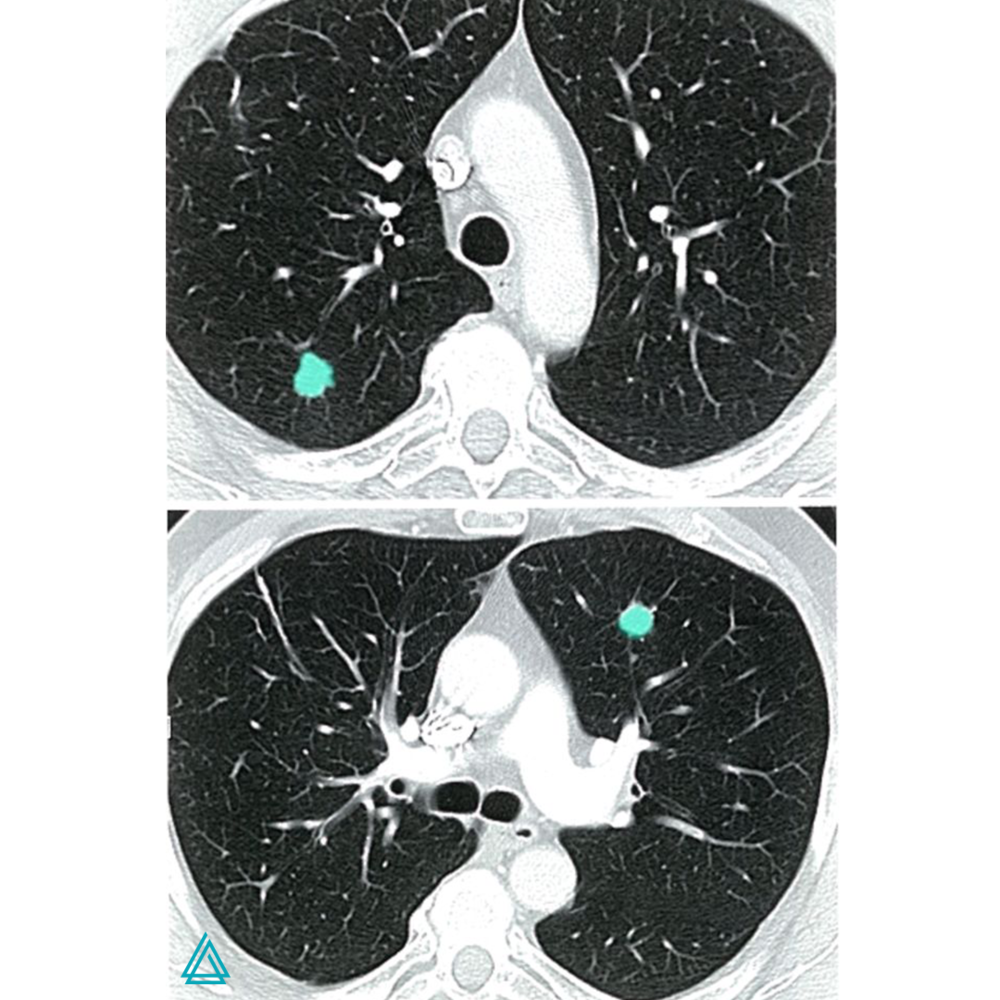 The CT scan of the lung (transverse section) indicates noncalcified lesions located left ventral and right dorsal, which are lung metastases in breast cancer.
The CT scan of the lung (transverse section) indicates noncalcified lesions located left ventral and right dorsal, which are lung metastases in breast cancer.
Cervical Cancer Screening
Some of our high-yield topics include cervical cancer screening, the major classes of epithelial cell abnormalities that can be seen on a Pap smear, as well as classifications of cervical intraepithelial neoplasia (CIN) and management algorithms based on the findings. Additionally, topics such as HPV subtypes and vaccination options are covered.
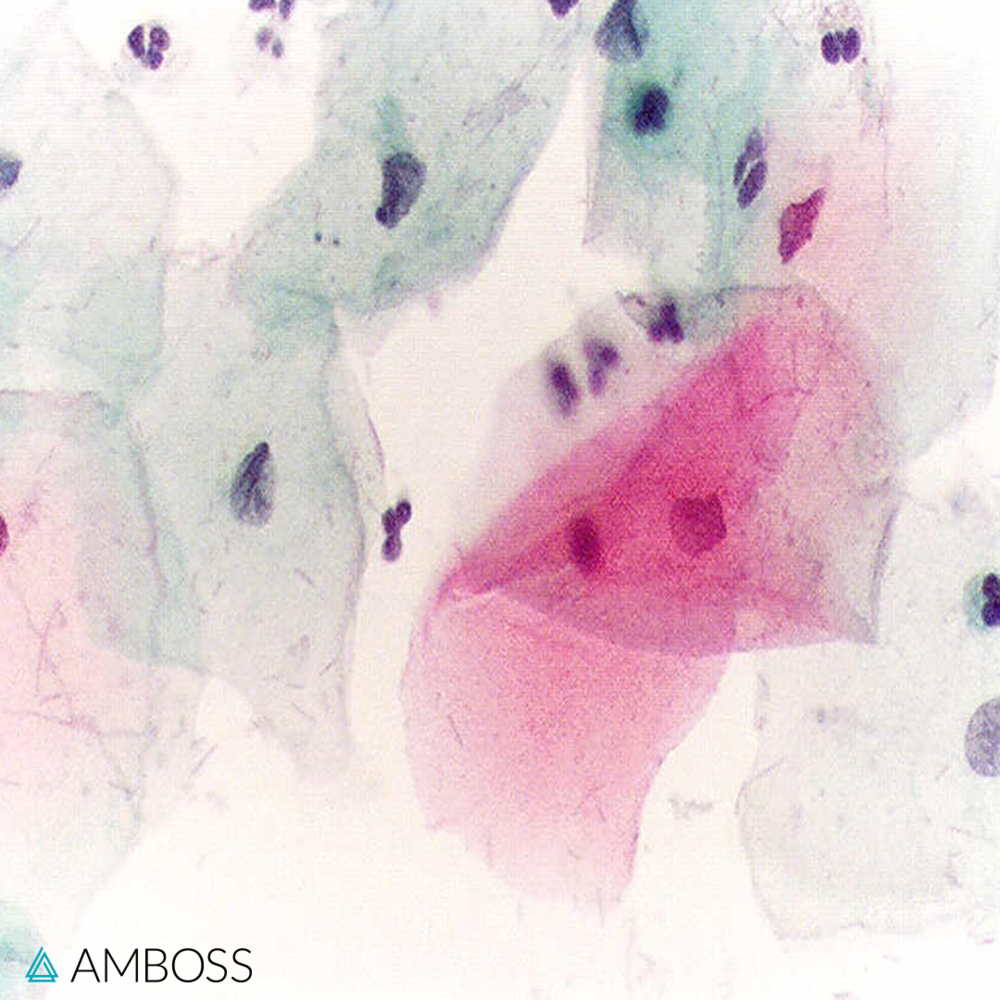 Pap smear (normal findings).
Pap smear (normal findings).
Female Reproductive System and Breast
The complexities of the female reproductive system and similarities of the diseases associated therein demand exposure to the diverse styles of questions. Our Qbank features multiple examples of how certain diseases will be tested on standardized exams, from infectious to immunologic and inflammatory disorders of the breast and female reproductive system. Covering such diverse topics as mastitis, fibroadenoma, mullerian agenesis, amniotic fluid embolism and more, the AMBOSS Qbank can help you familiarize yourself with how diseases are characterized on the OB/GYN Shelf Exam.
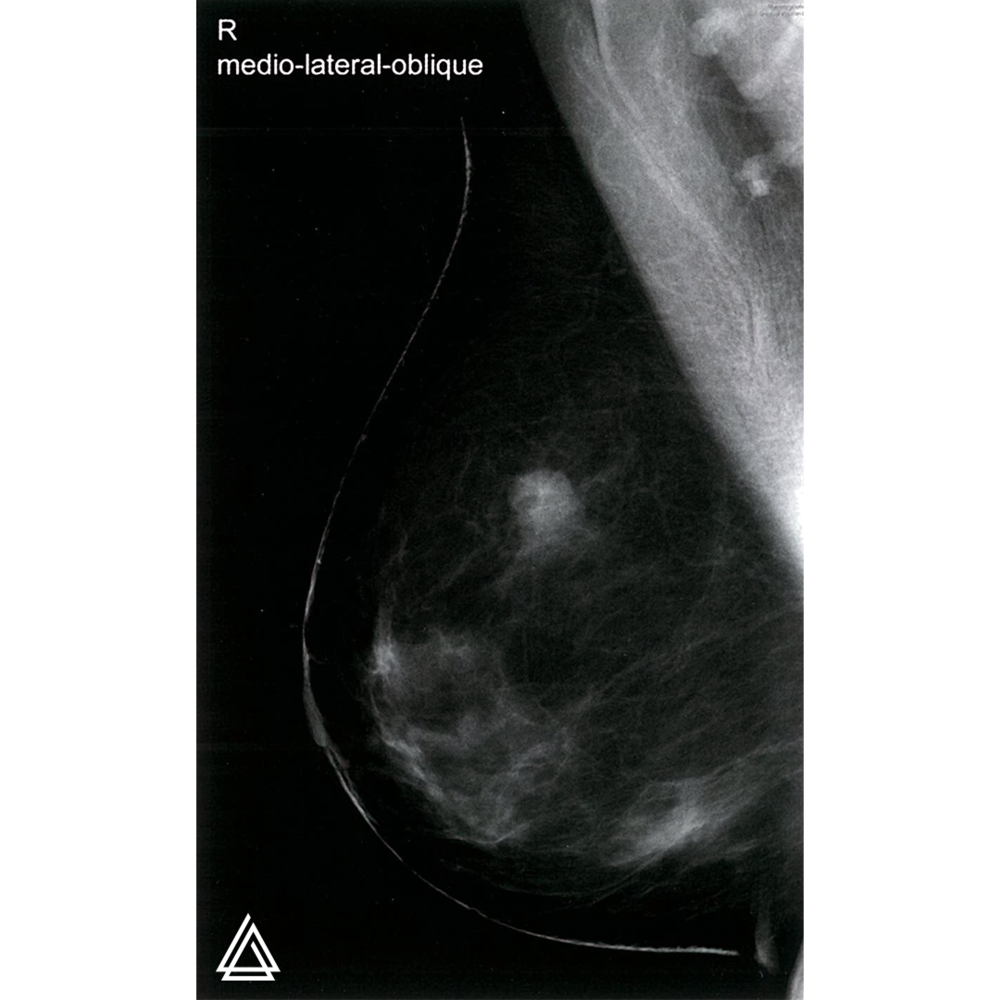 Mammography in breast cancer.
Mammography in breast cancer.
Hypertensive States of Pregnancy
We cover such topics as preeclampsia, eclampsia, and HELLP syndrome, including risk factors for each of these hypertensive states. Within the clinical knowledge library, you can find even more information, including such things as diagnostic criteria, treatments and management options.
Infertility
You can find various etiologies of female-based infertility (i.e. ovulatory factors, tubal factors, endometriosis, etc.) within the AMBOSS OB/GYN Qbank. Learn how to distinguish between each clinical entity both on the exam and in the clinic by pairing our Qbank with the clinical knowledge library.
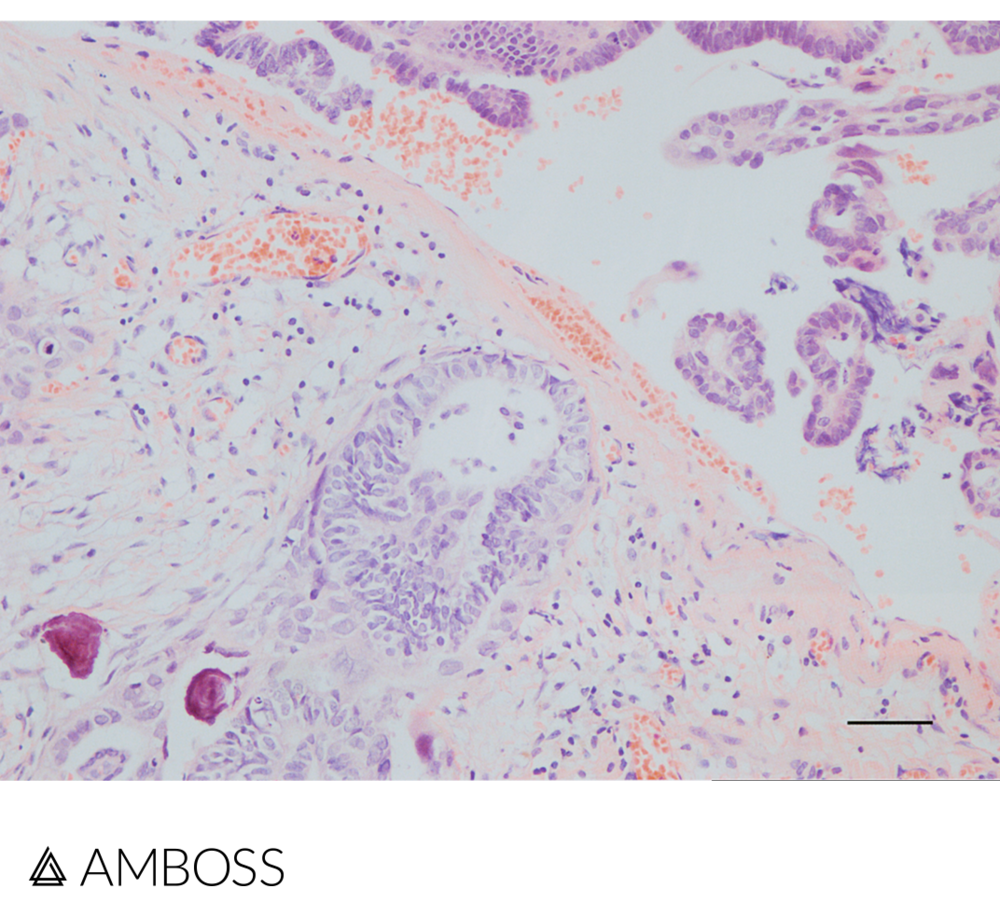 Histopathology slide of the ovary in H&E stain: In addition to papillary tumor cells there are two Psammoma bodies located at the lower edge of the image (highlighted in red). Psammoma bodies are concentric, lamellar calcifications, which are characteristic for serous tumors of the ovary.
Histopathology slide of the ovary in H&E stain: In addition to papillary tumor cells there are two Psammoma bodies located at the lower edge of the image (highlighted in red). Psammoma bodies are concentric, lamellar calcifications, which are characteristic for serous tumors of the ovary.
Ovarian Tumors
Since differential diagnostic considerations for ovarian tumors are extensive, we provide many challenging questions on this high-yield topic, including various categories (i.e. epithelial, germ cell) to different subtypes (i.e. mucinous cystadenoma, serous cystadenocarcinoma).
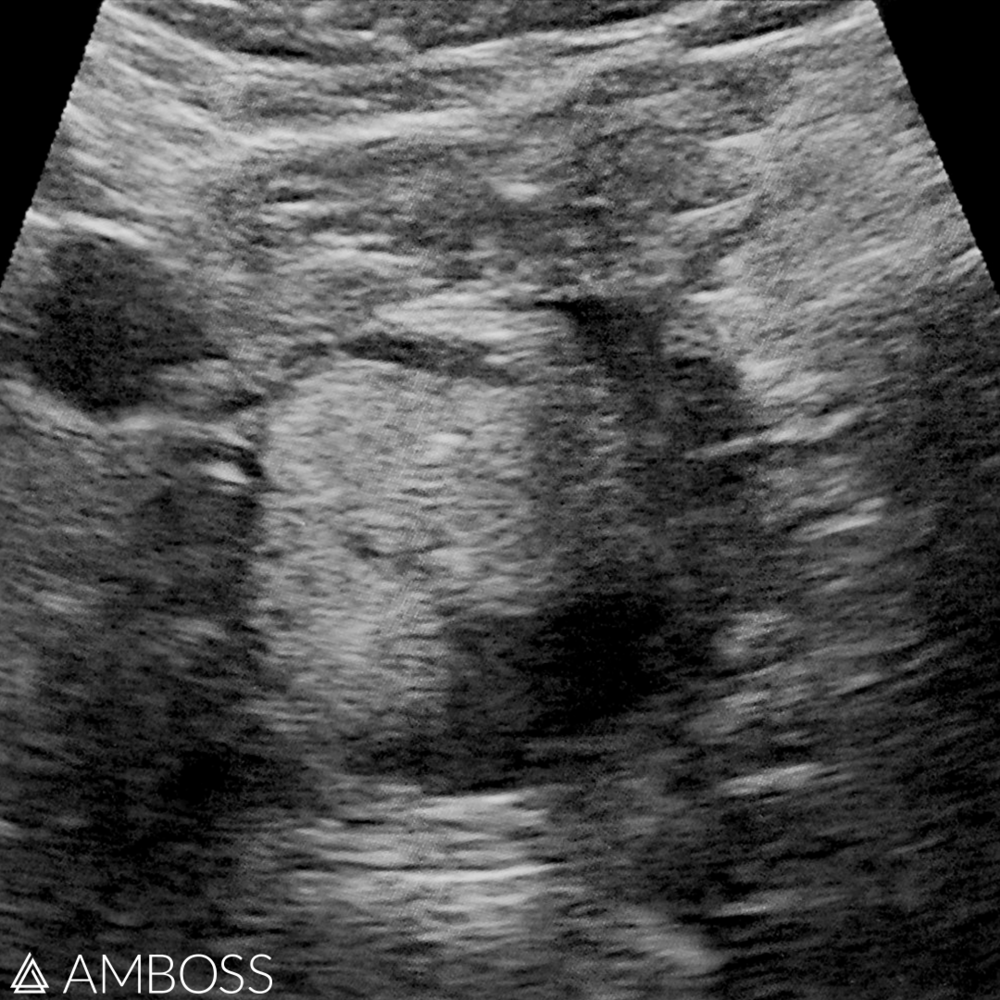 Ultrasound image of a dermoid cyst.
Ultrasound image of a dermoid cyst.
Pregnancy, Childbirth and the Puerperium
All relevant USMLE-based topics are covered, including prenatal care, obstetric complications, labor and delivery, puerperium, congenital disorders and more. Learn to interpret results with real clinical data. Toggle-on overlays and illustrations to point out exactly what you need to see, from ultrasounds to MRIs.
Sexually Transmitted Infections (STI)
The AMBOSS OB/GYN Shelf Qbank focuses on various vaginal infections (i.e. bacterial vaginosis, trichomonas) and how to correctly diagnose and treat each subtype, TORCH infections (i.e. toxoplasmosis, syphilis) and symptoms, HIV during pregnancy and much more.
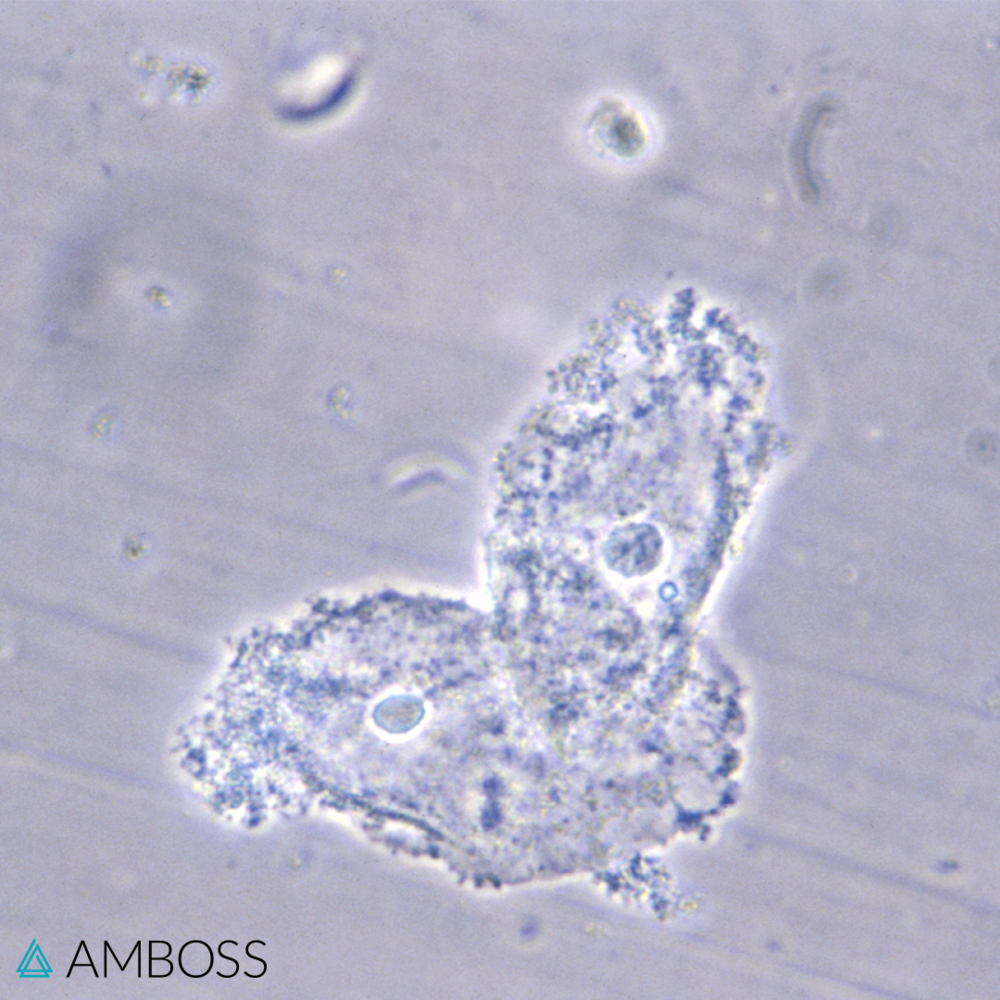 Clue cells in bacterial vaginosis.
Clue cells in bacterial vaginosis.
Urinary Incontinence
Urinary incontinence in female patients is a fairly common presentation that you can expect to see on the wards and in the clinics as a MS3/MS4 and requires an elegant approach to determining etiologies. The AMBOSS OB/GYN Shelf Qbank focuses on the various subtypes of urinary incontinence (i.e. stress, urge, overflow), the associated risk factors for each and the preferred treatments.
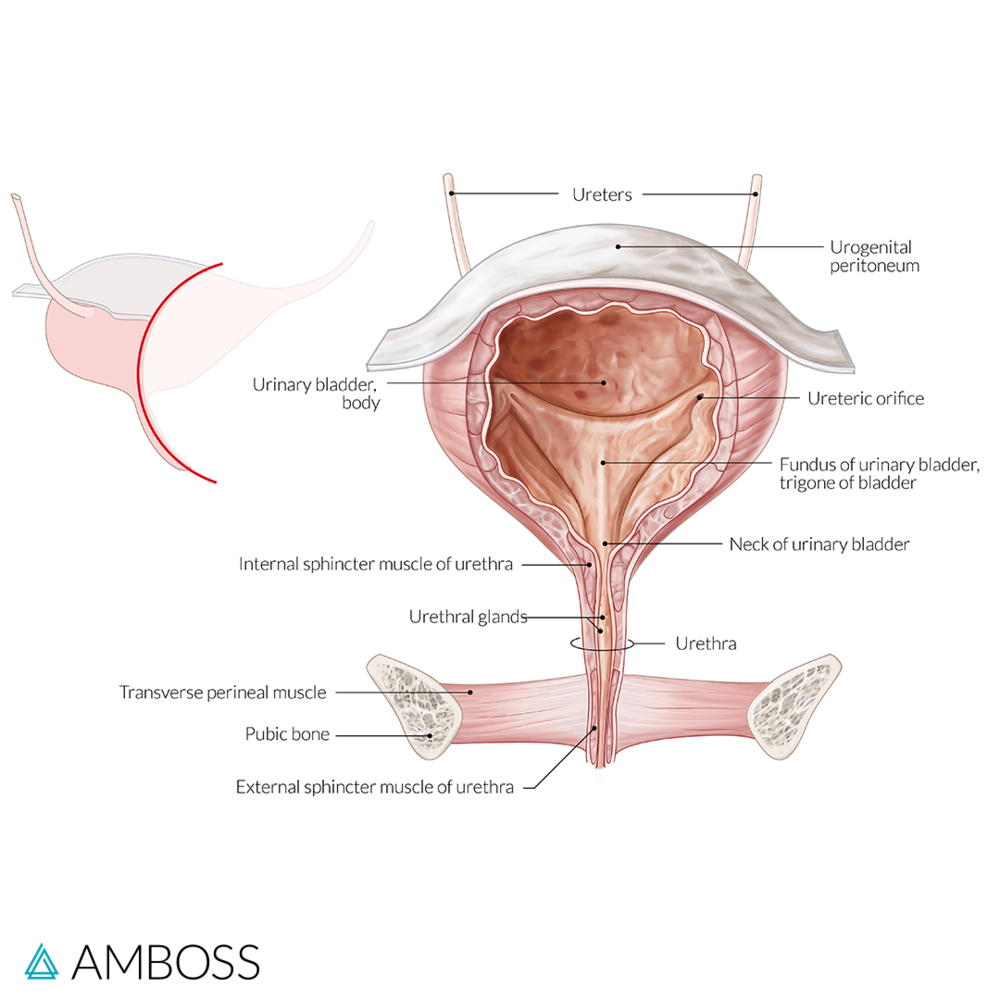 Female urinary bladder.
Female urinary bladder.
For all you ova-achievers out there looking to succeed during exams and clerkships - look no further. AMBOSS is at your cervix! Pair our extensive Qbank with our interactive clinical knowledge library to get the most out of studying for your OB/GYN Shelf Exam! Sign up today to test drive AMBOSS for free!
